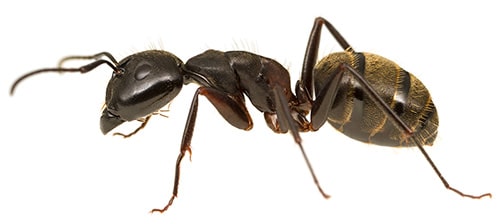My teaching philosophy is driven by three key principles: 1) stimulating & feeding curiosity, 2) demonstrating the practical and creative application of theory concepts, and 3) engaging students in interdisciplinary work. I draw from my research work on a fascinating insect group, teaching my own innovative class on evolution, and my experience in two fields: biology & business.
When I look at the teachers I have had over the years, I can identify one factor that separates them: The ones that were excited about what they taught, and the ones that were not. Naturally, I had to pass all classes, independent of the teacher’s excitement—but the topics that stuck or even stimulated a later career choice, were the ones conveyed by teachers who were passionate about their subjects. If someone is excited about a topic it usually prompts a basic emotion in others: curiosity. And curiosity stimulates creative thinking, learning, and exploration. I believe that the fundamental responsibility of a teacher is to evoke such curiosity in students—and to feed it.
As an instructor it is critical to educate students in important theories and concepts, however, only the practical application completes the learning process. Therefore, I believe in a hands-on learning experience for my students. I have been doing this in a variety of ways like discussing current research examples, bringing in guest speakers and engaging students in individual projects. In addition, I think it is important to connect study material throughout a course to gain a broader context. Therefore, I revisit theories and examples as we move on in order to establish a holistic view rather than to generate an accumulation of isolated concepts. When it comes to treating difficult topics, I think it is important to break things down to a comprehensible level and then build on it gradually. To keep my students engaged I use a range of tools and teaching practices. It does not hurt to be creative and I found that students value that.
In my BIO 295 Islands & Evolution class, I used case studies illustrated by photos, videos and/or animations every time I discussed a new concept to put what students have learned into practice and to establish broader context. I found that students responded well to this approach and it also helped to create excitement and curiosity in my classroom. Furthermore, I invited guest speakers from various departments on NC State campus, Duke University and NC Museum of Natural Sciences in order to expose students to first-hand research. Students reviewed a primary literature article suggested by the speaker as preparation and had the opportunity to ask questions after the presentation. For their independent project, students made a short film about a recently published research study in one of the leading journals in the field. They illustrated the study by also incorporating three theory concepts from class. While advising students on content, I gave them complete freedom in the implementation of these instructions.
I also think that it is important to teach to a diverse audience. I experienced teaching a class with 13 students at varying levels (sophomores, juniors and seniors), with different majors in addition to each student being unique in the way they understand and process information (as we all are). I addressed the fact that students were at different levels by teaching basic concepts but also presenting powerful case studies and material even advanced students are usually not familiar with. In addition, guest speakers often talked about more advanced studies (i.e. their own research). For lower level students it was interesting to see another application of a theoretical concept we covered in class but for higher level students this was an opportunity to ask in-depth questions and potentially make long-term contacts. In order to cover a wide array of learning types I employed a variety of learning techniques (see summary & application of workshop on learning styles).
I take it as my responsibility and task as a teacher to create an environment conducive to learning. Aside from finding a well-suited physical space, this includes setting certain classroom values and maintaining them by keeping a constant dialog with students. Honesty, fairness, and mutual respect are some important cornerstones that I identified when it comes to values that constitute a positive classroom climate. There are several additional teacher characteristics that I regard as important like approachability, flexibility, empathy/understanding, and reliability. As a teacher, I consider it my job to moderate the class towards adherence to these values but also to exhibit them in my teaching. To maintain an open dialog in the classroom and to assess the effectiveness of my teaching, I have been using a variety of evaluation and feedback methods like self-evaluation, peer-review, and feedback from my students, faculty members and my teaching mentors (see Additional Artifacts, PW can be found in CV).
I will always expect my students to do great things in their future and will facilitate and support them in any way I can. This is something that I have experienced from my own mentors and teachers and want to pass on. When I discovered my passion for ants, and my teacher said to me, why don’t you go to the U.S. and apply for graduate school in Biology? It seemed like a ridiculous, unachievable suggestion. Yet now, here I am and I would not be here were it not for the support I received from my teachers and mentors. I don’t believe in “But I can’t,” and I will show my students that they don’t need to believe in it either.
